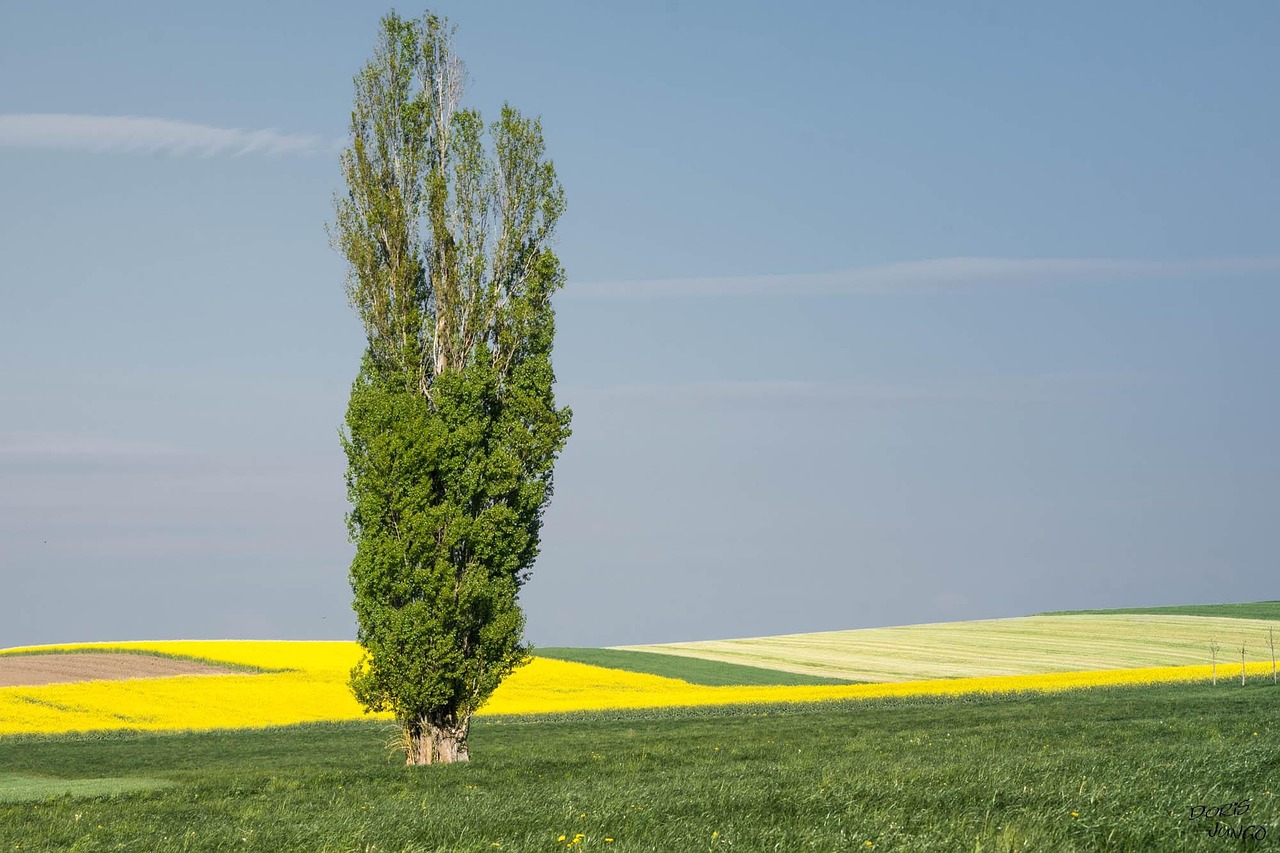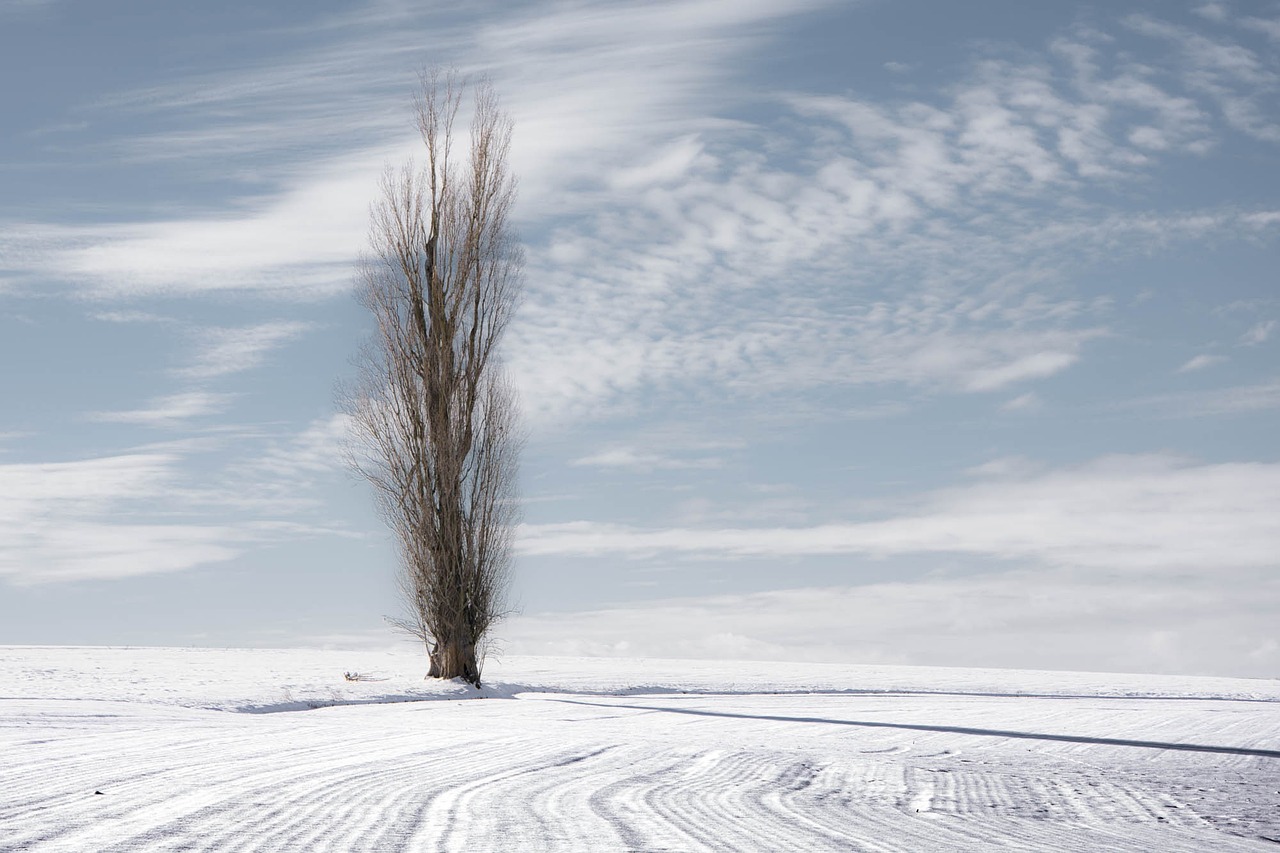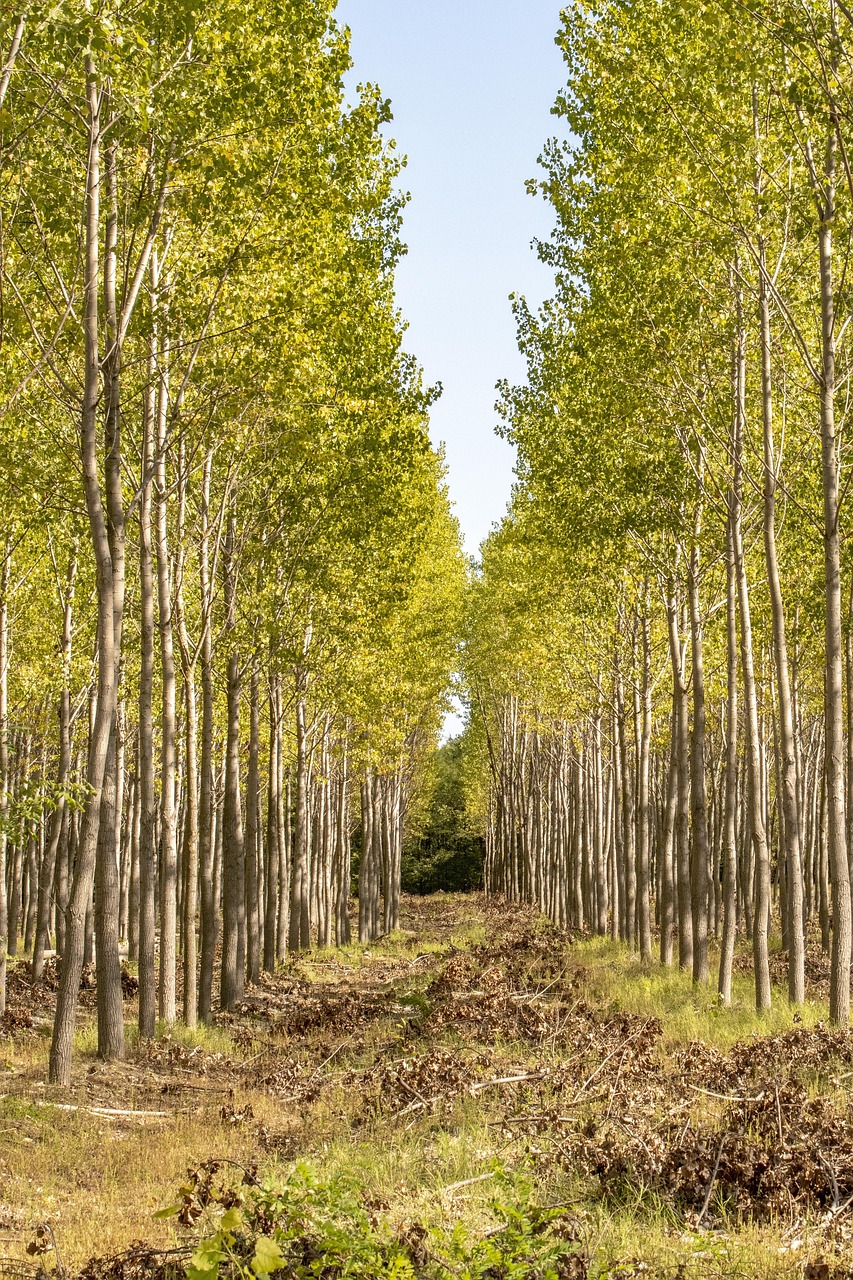Poplar trees can be identified by their broad, flat leaves and smooth bark, while pine trees are recognized for their needle-like leaves and rough, scaly bark. Both trees have distinct growth habits and habitats that set them apart.
Poplar and pine trees are both common in various landscapes, each contributing uniquely to the environment. Understanding the identifying features of these two tree types is essential for anyone interested in botany, gardening, or forestry. Poplars belong to the genus Populus and are deciduous trees, meaning they shed their leaves annually. They thrive in moist conditions and often grow near rivers or wetlands. Conversely, pines are part of the genus Pinus and are evergreen conifers, retaining their needle-like leaves throughout the year. They are well-suited to a variety of climates and soil types.
Key Differences Between Poplar and Pine Trees

When differentiating between poplar and pine trees, several characteristics must be considered. These include leaf shape, bark texture, growth habit, and habitat preferences. Below is a table that summarizes some of the key features of each tree type.
| Feature | Poplar Trees | Pine Trees |
|---|---|---|
| Leaf Type | Broad, flat leaves | Needle-like leaves |
| Bark Texture | Smooth, light-colored bark | Rough, scaly bark |
| Growth Habit | Tall with a straight trunk | Tall with a pyramidal shape |
| Habitat | Moist areas like riverbanks | Diverse environments including mountains and forests |
Poplar trees typically reach heights of 30 to 50 feet but can grow even taller under ideal conditions. They often have a fast growth rate, making them popular for timber production and landscaping. Their leaves are generally triangular or oval-shaped and turn vibrant colors in autumn.
Pine trees can vary significantly in size depending on the species, with some reaching over 100 feet tall. They possess clusters of needles that can number from two to five per bundle, depending on the type of pine. The cones of pine trees are also a distinctive feature, as they can range from small to very large and are crucial for reproduction.
Ecological Importance
Both poplar and pine trees play vital roles in their ecosystems. Poplar trees provide habitat for various wildlife species and help stabilize soil in wet areas. Their rapid growth makes them excellent for reforestation efforts.
Pine trees contribute to forest ecosystems by providing shelter and food for many animals. Their needles create a unique forest floor environment that supports various understory plants. Additionally, pines are significant for timber production and are widely used in construction and paper industries.
Understanding these characteristics not only aids in proper identification but also highlights the ecological contributions of each tree type. This knowledge is valuable for conservation efforts and promotes biodiversity. As you explore further into the features of these trees, you will gain insight into their uses and importance in various landscapes.
Physical Characteristics of Poplar and Pine Trees
To effectively distinguish between poplar and pine trees, it is essential to examine their physical characteristics in greater detail. These characteristics encompass not only the leaves and bark but also the overall growth structure and reproductive features. Understanding these aspects will aid in accurate identification.
Leaf Structure and Arrangement
The leaves of poplar and pine trees differ significantly in structure and arrangement. Poplar leaves are broad and flat, typically measuring 3 to 6 inches long. They exhibit a smooth texture and are often dark green during the growing season. The leaves can also display a glossy finish, particularly on the upper surface.
In contrast, pine tree leaves are needle-like and grow in clusters called fascicles. The number of needles in each cluster can vary by species:
- Two-needle pines, such as Pinus contorta (Lodgepole Pine)
- Three-needle pines, like Pinus strobus (Eastern White Pine)
- Five-needle pines, such as Pinus lambertiana (Sugar Pine)
The needles are usually 1 to 10 inches long, depending on the species, and they have a waxy coating that helps reduce water loss. This adaptation is particularly beneficial in dry climates.
Bark Features
Bark is another distinguishing feature between poplar and pine trees. The bark of poplar trees tends to be smooth and thin, often with a light gray or white coloration. As poplars mature, the bark may develop shallow fissures, but it remains relatively smooth compared to other tree species.
Pine tree bark, on the other hand, varies significantly among species but is generally rough and thick. It often has a reddish-brown or gray color with deep fissures. The texture can be scaly or plated, which aids in protecting the tree from environmental stressors.
Growth Patterns and Habitats
The growth patterns of poplar and pine trees also differ, impacting their habitats and ecological roles. Poplar trees tend to grow rapidly, reaching maturity within a few decades. Their straight trunks and broad canopies make them visually striking, often dominating their surroundings.
Pines exhibit a range of growth rates depending on the species. Some grow quickly, while others take decades to reach their full height. Pines can adapt to various environments, thriving in sandy soils, rocky terrains, and even mountainous regions. Their conical shape allows them to shed snow easily, preventing damage during winter months.
Reproductive Features
The reproductive structures of poplar and pine trees are fundamentally different due to their classifications as angiosperms and gymnosperms, respectively. Poplars produce flowers that develop into catkins. These catkins are often elongated and can be found hanging from branches in the springtime. They produce seeds that are lightweight and wind-dispersed, allowing for easy propagation over large distances.
Pine trees reproduce using cones. Male cones are small and produce pollen, while female cones are larger and contain seeds. The seeds of pines are typically winged, allowing them to be carried by the wind to new locations where they can germinate.
Uses of Poplar and Pine Trees

Both poplar and pine trees have significant economic importance, providing various materials for human use.
- Poplar Trees:
- Used for making furniture and cabinetry due to their workability.
- Popular in the production of paper products.
- Commonly utilized in landscaping for quick shade.
- Pine Trees:
- Source of timber for construction due to durability.
- Used for making paper products and packaging materials.
- Pine resin is harvested for various applications, including turpentine.
The diverse applications of both tree types highlight their value beyond simple aesthetics. They contribute significantly to forestry industries while also providing environmental benefits.

Cultural Significance of Poplar and Pine Trees
Beyond their ecological and economic roles, poplar and pine trees hold significant cultural importance in various societies. They have been symbols of strength, resilience, and longevity throughout history. Their unique characteristics lend themselves to different cultural narratives and practices.
Poplar Trees in Culture
Poplar trees are often associated with tranquility and beauty. Their tall, elegant structure and rustling leaves have inspired poets and artists alike. In many cultures, poplars are planted in cemeteries and memorial parks, symbolizing remembrance and the connection between life and death.
Some specific cultural associations with poplar trees include:
- Folklore: In various traditions, poplar trees are seen as magical or protective entities. They are often linked to spirits or deities.
- Art and Literature: Many poets, including the famous poet John Keats, have referenced poplars in their works to evoke feelings of nostalgia and reflection.
- Landscaping: Due to their fast growth and attractive appearance, poplars are frequently used in urban landscaping to provide shade and beautify public spaces.
Pine Trees in Culture
Pine trees also carry rich cultural symbolism. They are often regarded as symbols of endurance and longevity due to their evergreen nature. Many cultures celebrate the pine tree as a representation of resilience and strength against harsh conditions.
Key cultural aspects of pine trees include:
- Symbolism: In several Asian cultures, particularly in China and Japan, pine trees symbolize longevity, wisdom, and peace. They are frequently depicted in traditional art and gardens.
- Festivals: Pine trees play a central role in various festivities, such as Christmas celebrations where pine trees are decorated and celebrated for their beauty.
- Traditional Medicine: In some cultures, parts of pine trees, including needles and resin, are used in herbal remedies due to their perceived health benefits.
Environmental Benefits of Poplar and Pine Trees

The environmental impact of poplar and pine trees extends beyond their aesthetic and economic uses. They provide numerous ecological benefits that contribute positively to their habitats.
Carbon Sequestration
One of the most crucial environmental roles of both tree types is carbon sequestration. Trees absorb carbon dioxide from the atmosphere during photosynthesis, helping mitigate climate change.
- Poplar Trees: Due to their rapid growth rate, poplars can sequester large amounts of carbon quickly. This makes them valuable in reforestation projects aimed at combating global warming.
- Pine Trees: Pines also play an essential role in carbon storage. Their longevity allows them to store carbon for extended periods, making them critical assets in forest ecosystems.
Erosion Control
Both poplar and pine trees help prevent soil erosion through their root systems. The roots stabilize the soil, reducing the risk of landslides and maintaining soil quality.
- Poplar Trees: Their extensive root systems are particularly effective in riparian zones, where they help anchor soil near waterways.
- Pine Trees: Pines adapt well to various soil types, making them effective at controlling erosion on slopes and steep terrains.
Biodiversity Support
Poplar and pine trees contribute significantly to biodiversity within their ecosystems. They provide habitat and food for a variety of wildlife species.
- Poplar Trees: The leaves and bark serve as food sources for insects, which in turn attract birds and other wildlife. Additionally, poplars create diverse habitats that support various plant species.
- Pine Trees: Pines offer shelter for numerous animals, including birds, squirrels, and insects. Their cones provide a food source for many species, contributing to a balanced ecosystem.
The cultural significance and environmental benefits of poplar and pine trees underscore their value beyond mere identification. Understanding these aspects fosters appreciation for these remarkable species and highlights their integral roles in our world.
Challenges and Considerations in Cultivating Poplar and Pine Trees
While poplar and pine trees are valuable for various reasons, their cultivation can present certain challenges. Understanding these challenges is essential for anyone looking to plant or manage these trees effectively.
Pests and Diseases
Both poplar and pine trees are susceptible to specific pests and diseases that can affect their growth and health. Identifying these issues early on is crucial for maintaining healthy trees.
- Poplar Trees: Common pests include the poplar borer, which can cause significant damage to the tree’s trunk. Additionally, poplars are vulnerable to fungal diseases like leaf spot and canker.
- Pine Trees: Pines face threats from pests such as the pine beetle, which can lead to widespread tree mortality. Fungal infections, including pine wilt disease, can also impact their health.
Environmental Factors
The success of growing both tree types is influenced by environmental factors such as soil quality, moisture levels, and climate. Each species has specific requirements that must be considered when planting.
- Poplar Trees: These trees thrive in moist, well-drained soils. They are sensitive to drought conditions, which can hinder their growth.
- Pine Trees: Pines are more adaptable to various soil types but prefer well-drained sandy soils. They can withstand drought better than poplars but may struggle in overly wet conditions.
Maintenance Practices
Regular maintenance is essential for the health and longevity of both poplar and pine trees. This includes proper watering, pruning, and monitoring for pests.
- Poplar Trees: Due to their fast growth, poplars may require frequent pruning to maintain desired shapes and remove any dead or diseased branches.
- Pine Trees: Pines often need less frequent pruning, but it is still important to remove any dead branches and monitor for signs of disease or pest infestations.
Final Thoughts
Identifying the features of poplar and pine trees involves understanding their distinct physical characteristics, ecological roles, cultural significance, and practical challenges in cultivation. Both tree types offer unique contributions to their environments and have been integral to human culture throughout history.
Poplar trees stand out with their broad leaves and rapid growth, making them ideal for quick shade and reforestation efforts. Their smooth bark and vibrant colors in autumn enhance landscapes while providing essential habitats for various wildlife. Conversely, pine trees are celebrated for their evergreen nature and adaptability to different climates. Their needle-like leaves and sturdy cones contribute significantly to forest ecosystems and human industries alike.
Their roles in carbon sequestration, erosion control, and support for biodiversity highlight the importance of both tree types in addressing environmental challenges. As we face increasing concerns over climate change and habitat loss, promoting the growth and protection of poplar and pine trees becomes even more critical.
In conclusion, a comprehensive understanding of poplar and pine trees enriches our appreciation for these remarkable species. By recognizing their unique features, benefits, and potential challenges, we can make informed decisions about planting, conserving, and utilizing these trees in sustainable ways that benefit both the environment and society as a whole.
